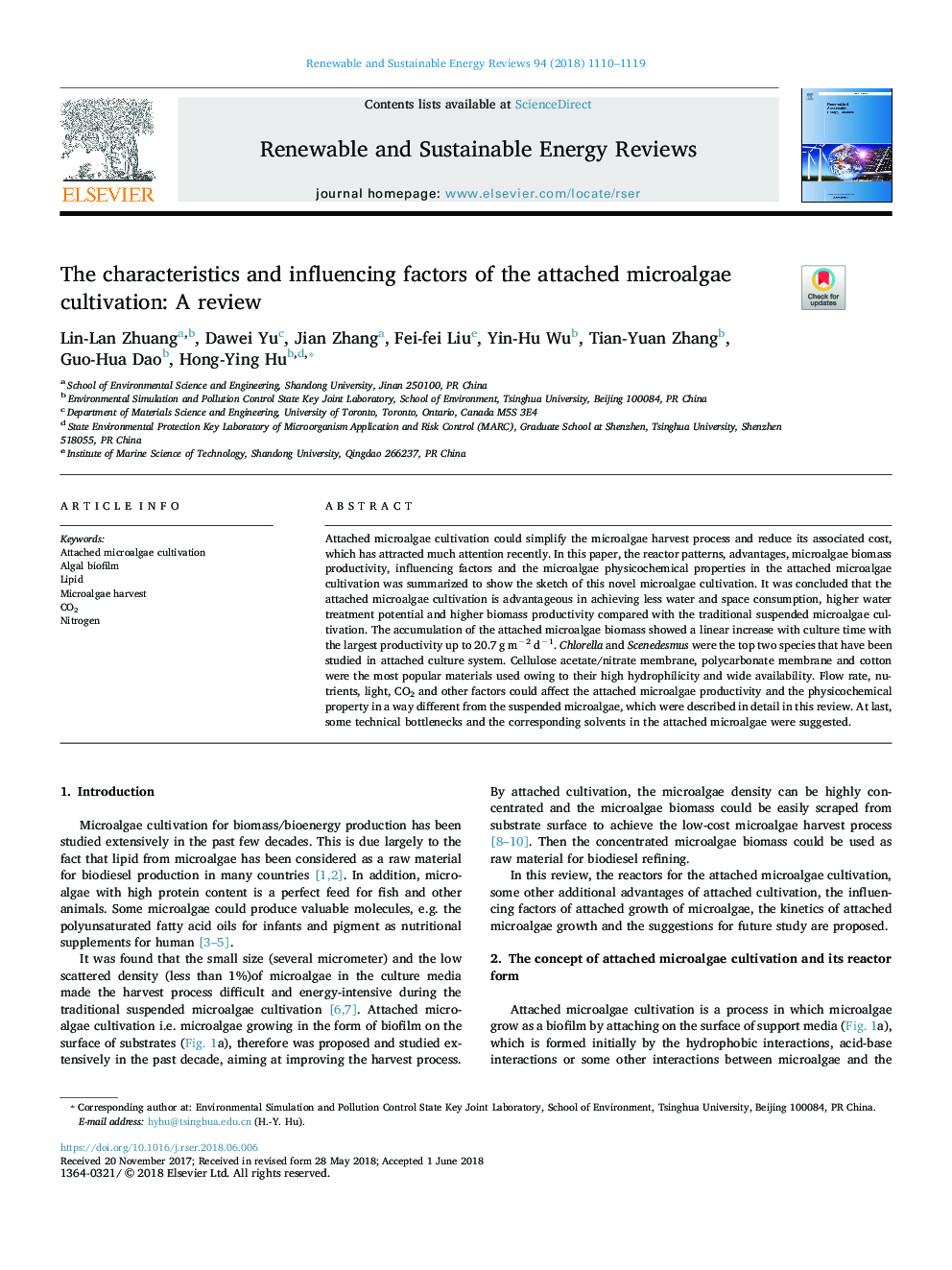| Article ID | Journal | Published Year | Pages | File Type |
|---|---|---|---|---|
| 8110614 | Renewable and Sustainable Energy Reviews | 2018 | 10 Pages |
Abstract
Attached microalgae cultivation could simplify the microalgae harvest process and reduce its associated cost, which has attracted much attention recently. In this paper, the reactor patterns, advantages, microalgae biomass productivity, influencing factors and the microalgae physicochemical properties in the attached microalgae cultivation was summarized to show the sketch of this novel microalgae cultivation. It was concluded that the attached microalgae cultivation is advantageous in achieving less water and space consumption, higher water treatment potential and higher biomass productivity compared with the traditional suspended microalgae cultivation. The accumulation of the attached microalgae biomass showed a linear increase with culture time with the largest productivity up to 20.7â¯gâ¯mâ2 dâ1. Chlorella and Scenedesmus were the top two species that have been studied in attached culture system. Cellulose acetate/nitrate membrane, polycarbonate membrane and cotton were the most popular materials used owing to their high hydrophilicity and wide availability. Flow rate, nutrients, light, CO2 and other factors could affect the attached microalgae productivity and the physicochemical property in a way different from the suspended microalgae, which were described in detail in this review. At last, some technical bottlenecks and the corresponding solvents in the attached microalgae were suggested.
Related Topics
Physical Sciences and Engineering
Energy
Renewable Energy, Sustainability and the Environment
Authors
Lin-Lan Zhuang, Dawei Yu, Jian Zhang, Fei-fei Liu, Yin-Hu Wu, Tian-Yuan Zhang, Guo-Hua Dao, Hong-Ying Hu,
